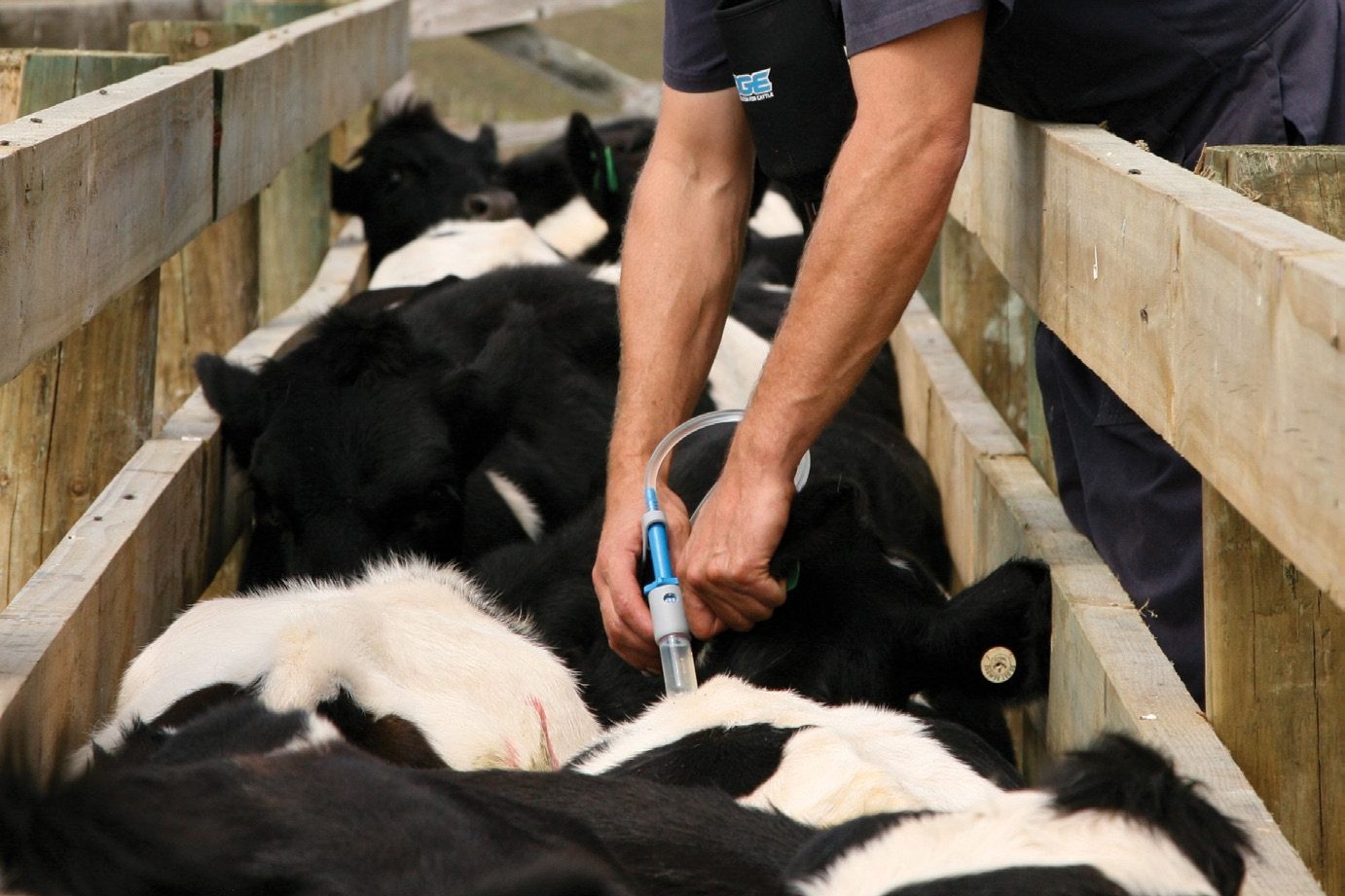Making drenching count
Farmers should target worm control in cattle at young animals and use oral drenches as long as they can, Wairarapa vet Sara Sutherland writes.

Farmers should target worm control in cattle at young animals and use oral drenches as long as they can, Wairarapa vet Sara Sutherland writes.
Sheep and cattle systems have some subtle differences with respect to drenches and drenching. For example, worm species are (mostly) different, the availability of pour-on drenches for cattle, the limited availability of novel drenches, the lack of information about drench resistance, and the lower reliability of faecal egg counting.
The basic principles are the same though. If you’re making decisions about worm control in cattle, keep these basic principles in mind.
Younger animals are more susceptible to worms, shed more eggs, and suffer more from worms. This means that you should target worm control at that age group. The highest risk for developing resistance is where you have lots of young animals that need drenching.
In beef, this is usually Friesian bull beef where you buy in animals either at weaning/100kg or at four days old. Heifer grazing is another situation where drench use and the risk of resistance can be high. If you are running those systems, like lamb finishing, you need to monitor regularly, provide refugia with each drench, and use effective combination drenches.
We know that pour-on drenches are less effective than injections, which are less effective than oral drenches. You should use oral drenches as long as it is safe.
Triple combination
Using triple combination drenches delays resistance because the worm has to change a different thing in their genome each time they develop resistance to a different chemical. It takes them longer to develop resistance to three drenches at once than subsequent single or double active drenches.
In cattle the only triple drenches available are oral drenches.
Adult animals develop their own immunity to worms. Drenching adult animals increases the likelihood of resistance. Because adult animals ingest larvae but these don’t develop into adult worms, you can use adult animals to reduce the larval challenge on pasture. Cattle over two years old should only be drenched on an individual basis
if an individual is suffering from worms.
In adolescent cattle, as in hoggets and two-tooths, you should target drenching to those that need it and avoid drenching those that don’t. With cattle there is a great advantage over sheep with the common use of electronic identification linked with scales. Many of my farmers will see the daily gain since the last drench pop up on the screen.
Research suggests a good way to target drench in yearling to 18-month cattle is to drench individuals that are not achieving 80% of your target growth rate, or 80% of the average weight gain of the mob (this means weighing a sample of the mob first). This reduces drench use, increases refugia, and optimises weight gain – a great technique!
The cattle worm Ostertagia ostertagii (not the same as the sheep worm now called Teladorsagia which used to be called Ostertagia) can burrow into the lining of the stomach and overwinter there, sometimes breaking out and killing young cattle in the spring. Luckily most drenches containing a “mectin” family will get rid of the stage and prevent that breaking out.
Graze for dilution
Quarantine drenching is tricky with cattle as we don’t have the novel anthelmintics (although Zolvix Plus can be used in cattle). The principles though are the same – use a drench that should be effective even if they have triple-resistant worms on board, then graze them somewhere where there are likely to be lots of worm larvae to dilute any worms that escape the drenching.
Should you quarantine-drench adult cattle? Tough call and this will depend in part on how likely these animals are to be bringing in resistant worms. If you are buying in two-year-old store cattle, don’t have young cattle on the farm, and they are bringing in resistant worms, but you are never drenching them, then does it matter if they bring in resistant worms? In that situation it might be better to avoid a quarantine drench altogether.
Monitoring by faecal egg counting (aka worm egg counting) is less reliable in cattle over 12 months, in the sense that if you see a high egg count it means that the worms are there, but a low egg count doesn’t mean they aren’t. This is at least partly from the sheer volume of faeces produced (the small amount you sample might miss the bit that has eggs in it). If an older cattle beast has signs consistent with worms then by all means do a worm egg count (WEC), but interpret the results taking this into account.
This means that doing a faecal egg count reduction test (FECRT) to tell which worm species are resistant to which drenches is more difficult in cattle. Talk to your vet or Wormwise facilitator if you want to know more about setting up a FECRT in young cattle.
In summary, target worm control at young animals, use oral drenches as long as you can, use adult animal to reduce challenge on pasture for younger animals, avoid drenching adult animals unless they are suffering from worms, after the first year of age target drenching to animals that need it, and be aware of how to interpret faecal egg counts in cattle over a year old.
- Sara Sutherland is a veterinarian with Veterinary Services Wairarapa.
If you would like to learn more about these basic principles, look up the excellent website www. wormwise.co.nz or ask when the next Wormwise workshop is available in your area..




